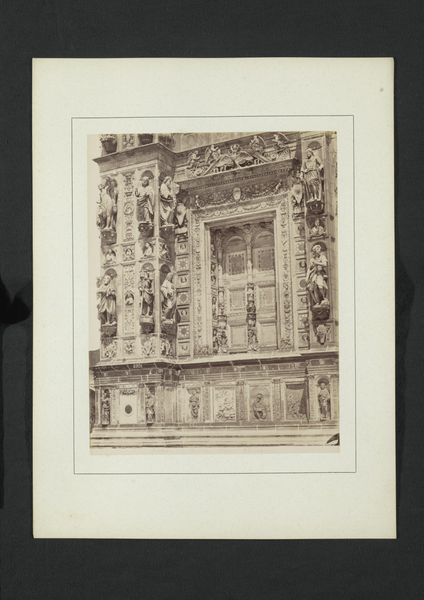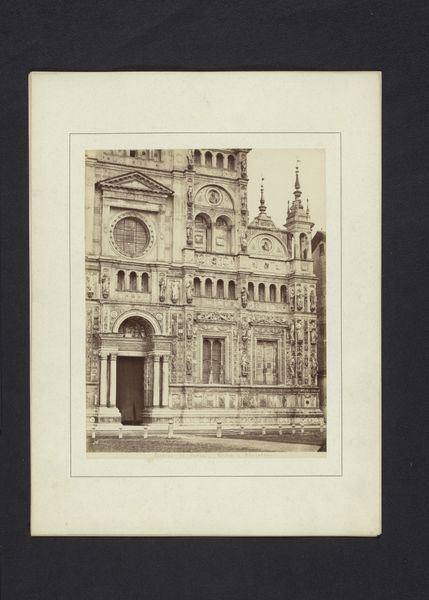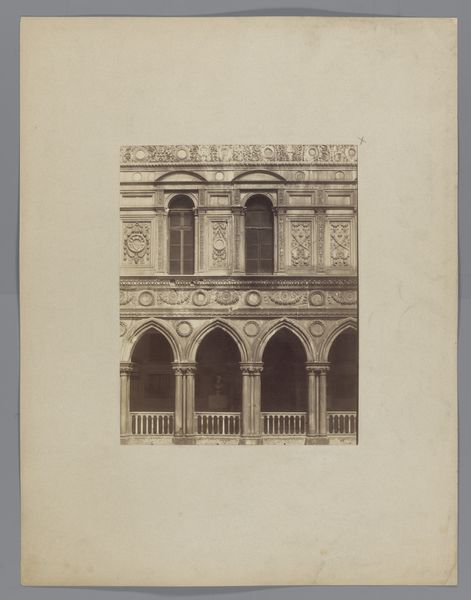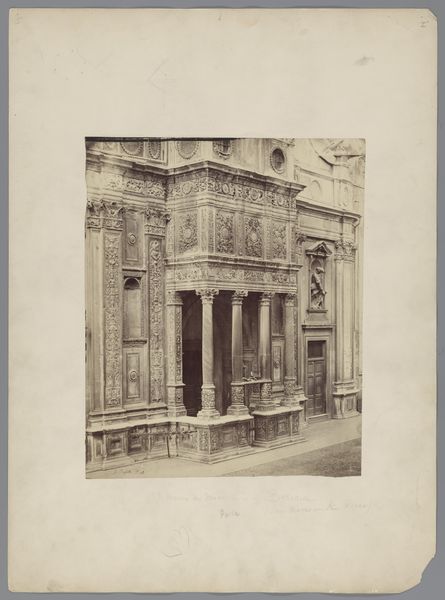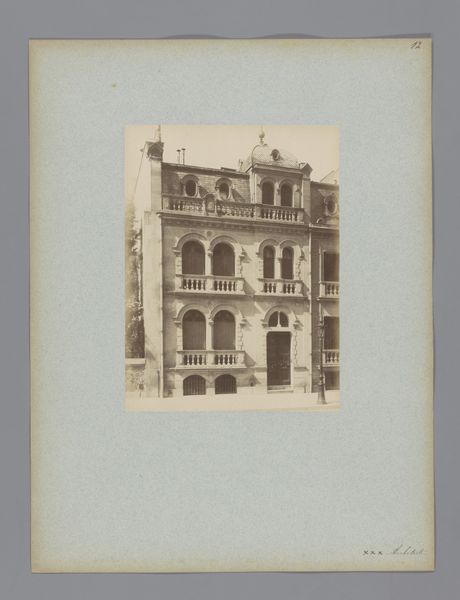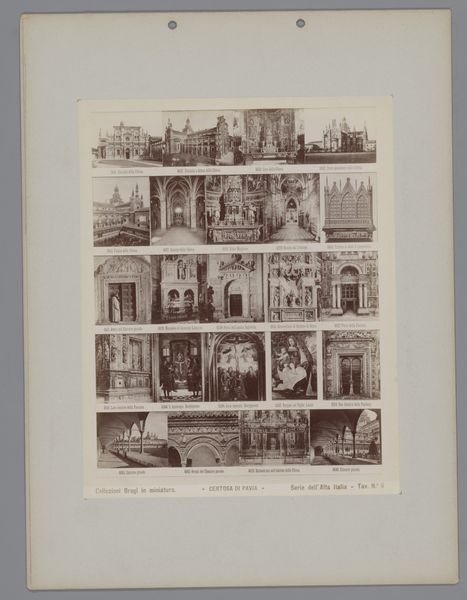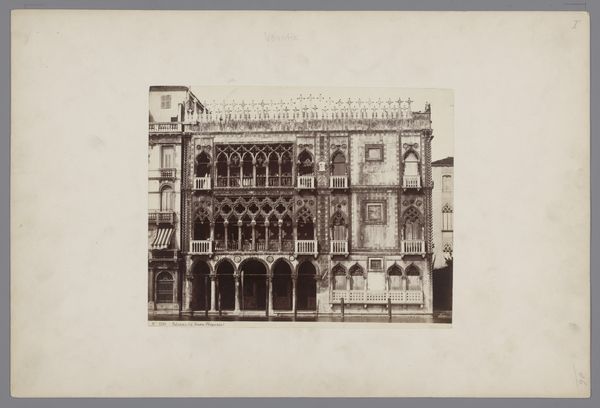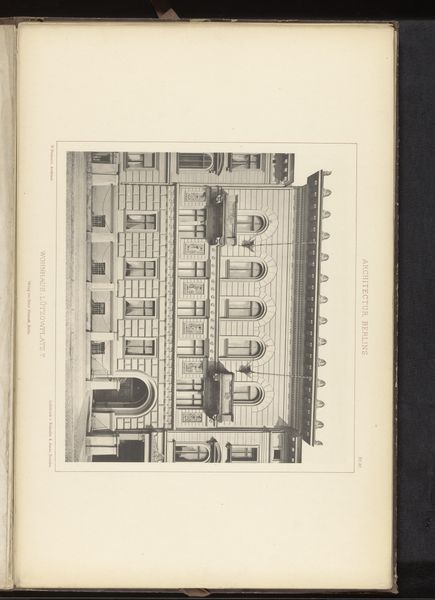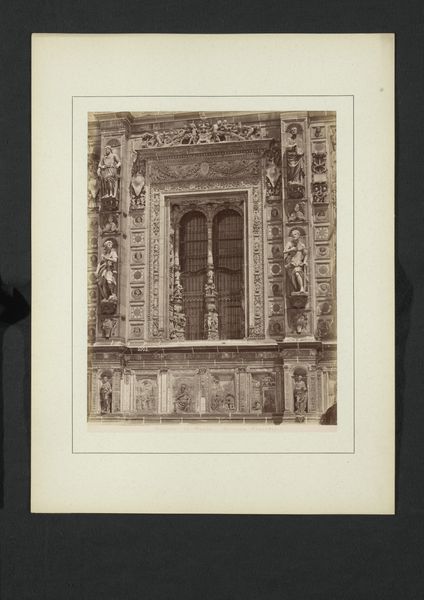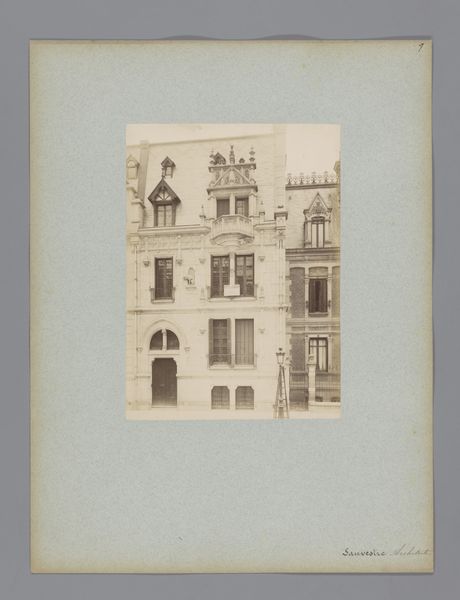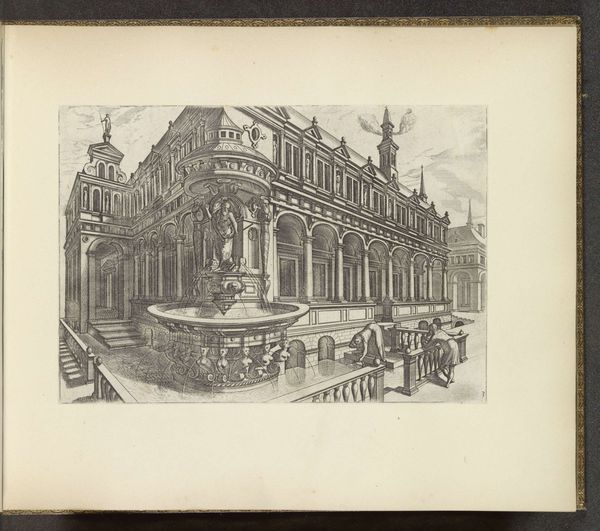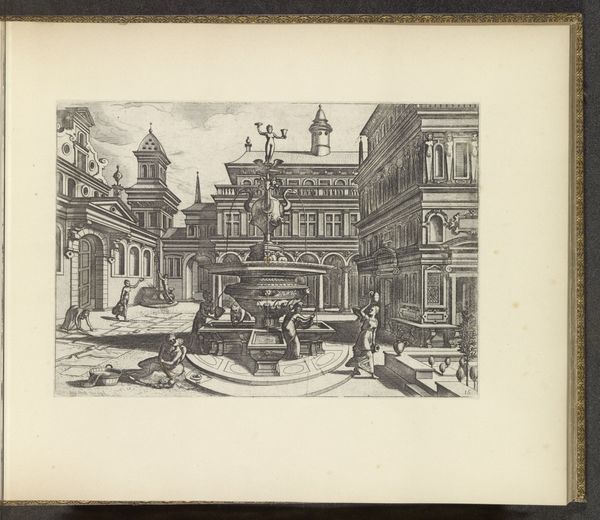
print, photography, architecture
#
aged paper
#
toned paper
#
pale palette
#
reduced colour palette
# print
#
old engraving style
#
white palette
#
photography
#
personal sketchbook
#
unrealistic statue
#
ancient-mediterranean
#
cityscape
#
italian-renaissance
#
architecture
#
realism
#
historical font
#
columned text
Dimensions: height 380 mm, width 287 mm
Copyright: Rijks Museum: Open Domain
Curator: The sheer level of detail here is extraordinary! It seems that Noack, the photographer, was deeply concerned with surface and texture. Editor: Indeed. It's captivating. I am immediately drawn in by the rather complex layers of architectural features presented. The toned paper enhances a slightly aged feeling as well, creating an air of almost serene contemplation. Curator: Well, let's place it in context. This is one of Alfredo Noack's photographic prints, entitled "Raampartijen van de Certosa di Pavia", captured some time before 1882. We are seeing architectural details here, as reflected by the photograph's tonal range and detail. Editor: The repetition of architectural forms--the rows of windows, arches, and statuary niches, contribute to a rather striking aesthetic experience. One sees it as nearly an abstraction based on classical principles. It is an exploration of form that seems both structured, precise, and strangely intimate. Curator: Certainly, it's a study in contrasts. Noack gives us realism but it could arguably reference the architecture of ancient or Renaissance Italy. Editor: The lens appears to have recorded everything with a clinical distance. I find it significant how the lack of human presence makes the architecture seem almost haunting, raising concerns regarding structures of power and their physical expression in the urban landscape. Curator: That’s an interesting reading. I am compelled to simply stand in awe of its design, a visual embodiment of historical processes but I’d disagree that Noack adopts that clinical perspective because ultimately we still sense his personal connection to this work. Editor: And ultimately, that's why it retains its captivating presence to this day; regardless of context it still speaks directly through form, balance and tonal considerations. Curator: A final and vital intersection of how artistry and time meet within this captured scene, then!
Comments
No comments
Be the first to comment and join the conversation on the ultimate creative platform.
